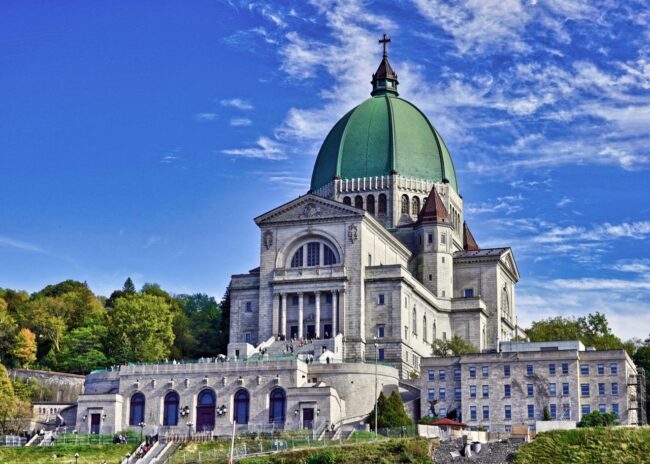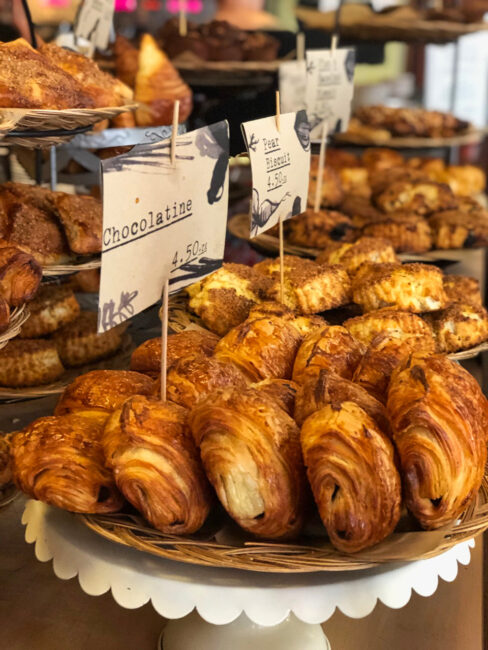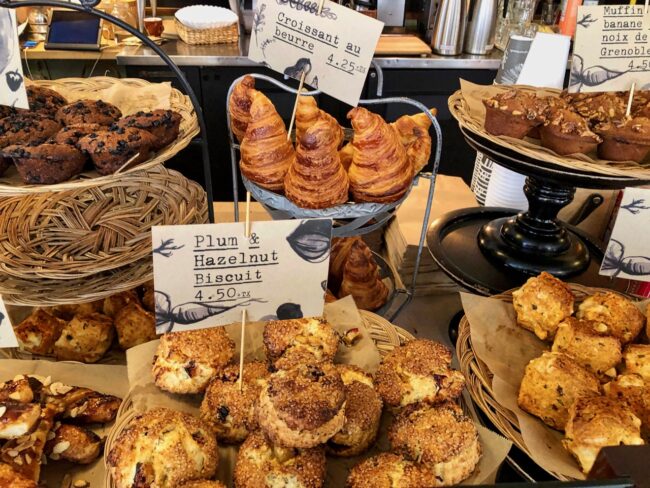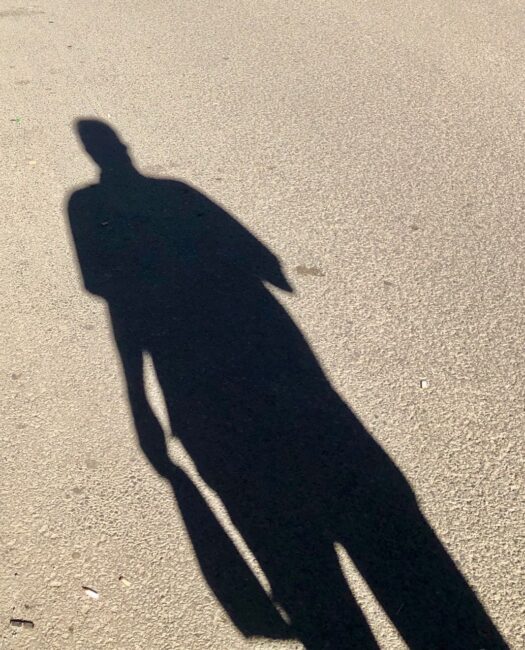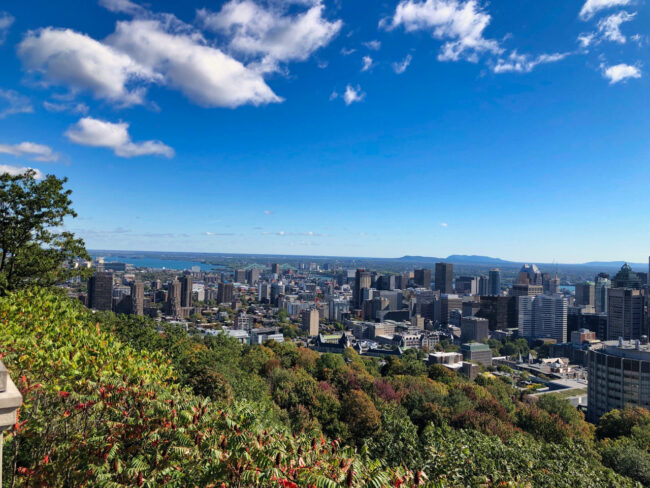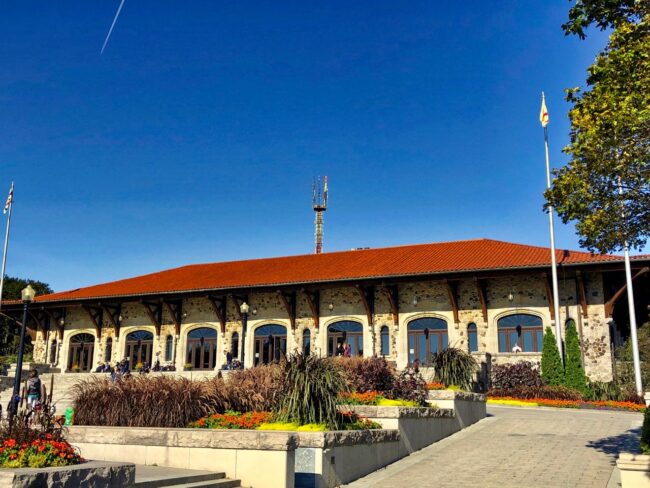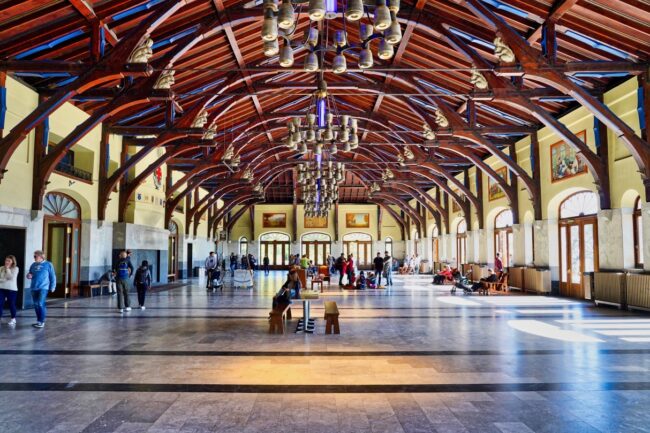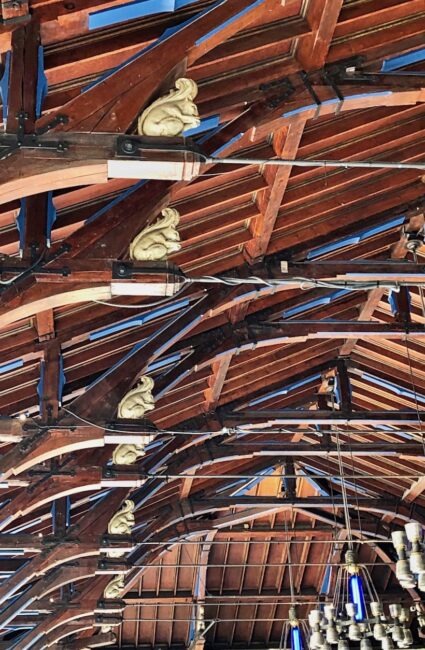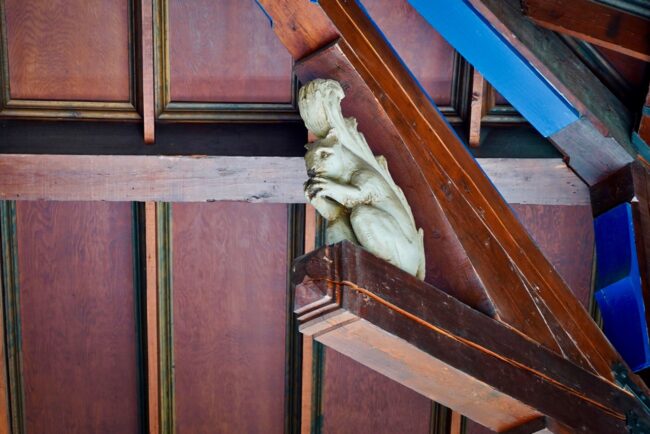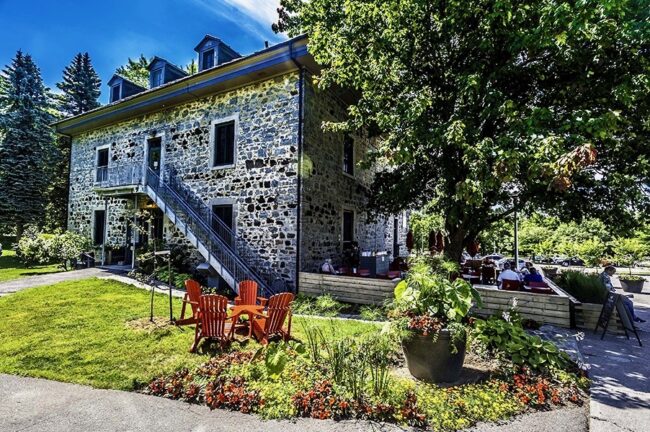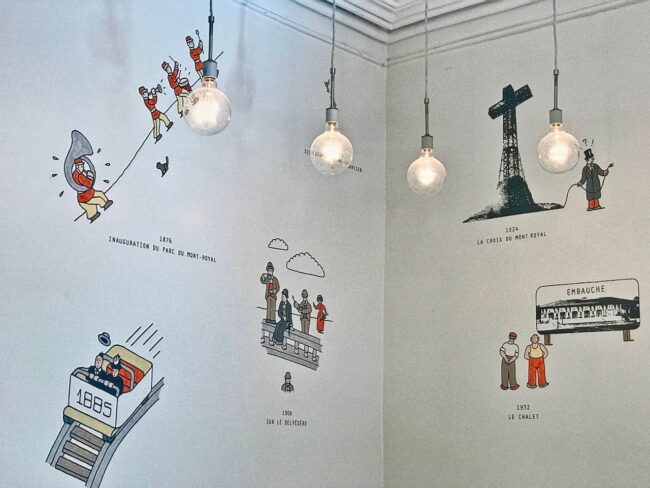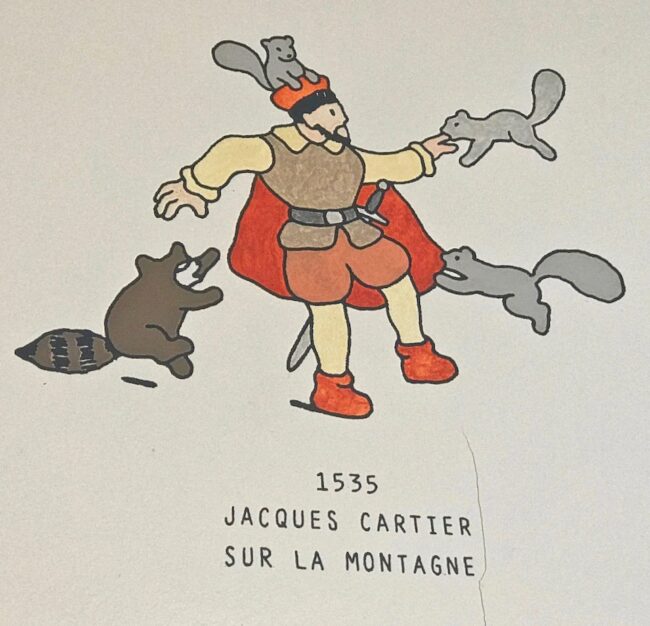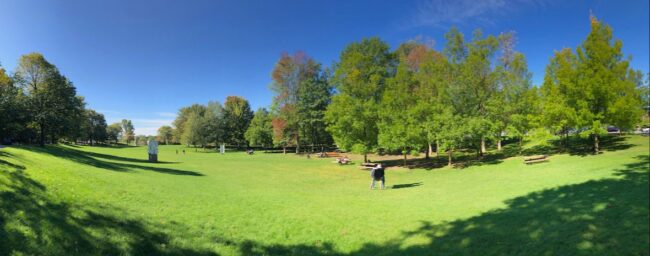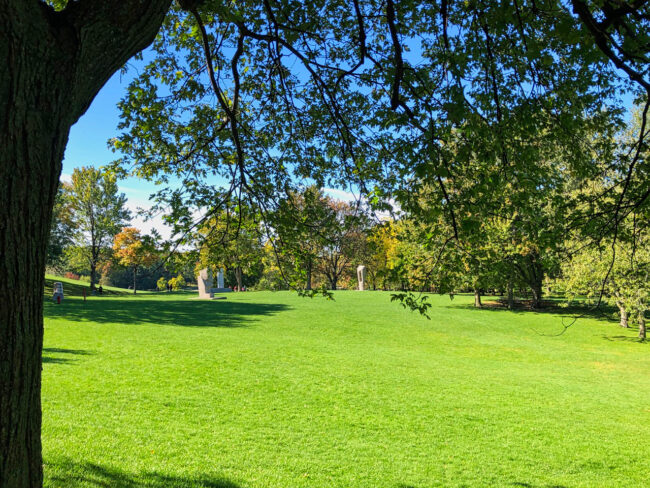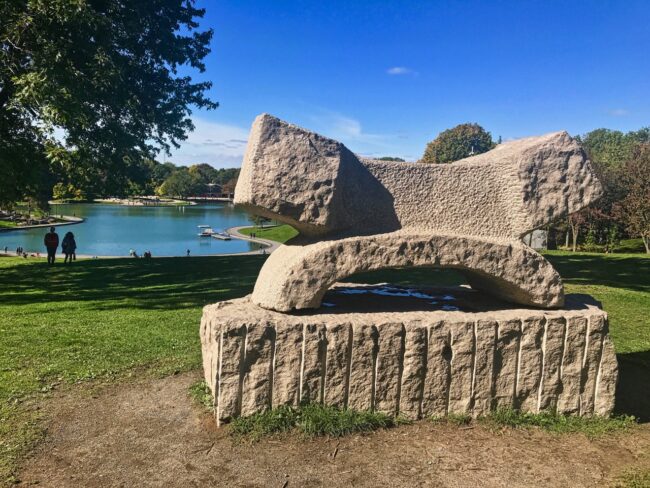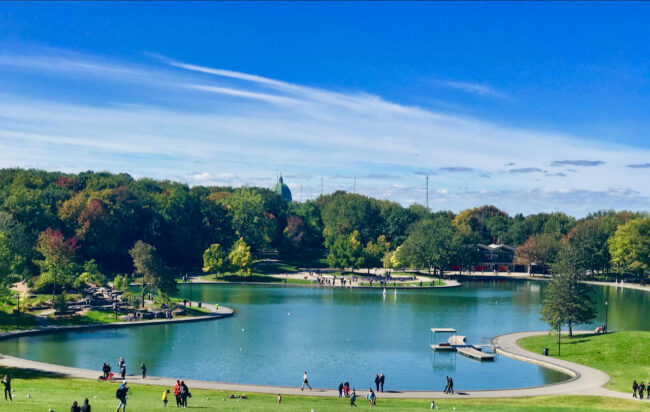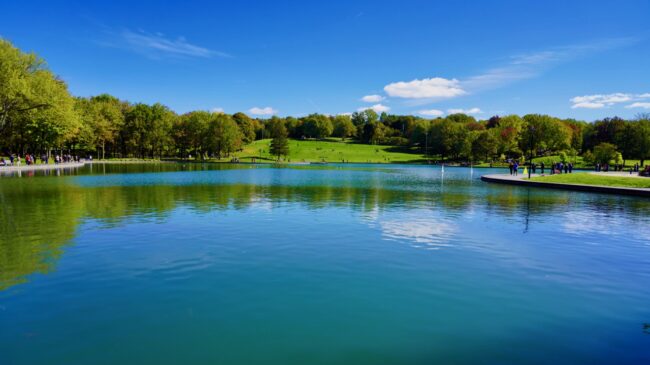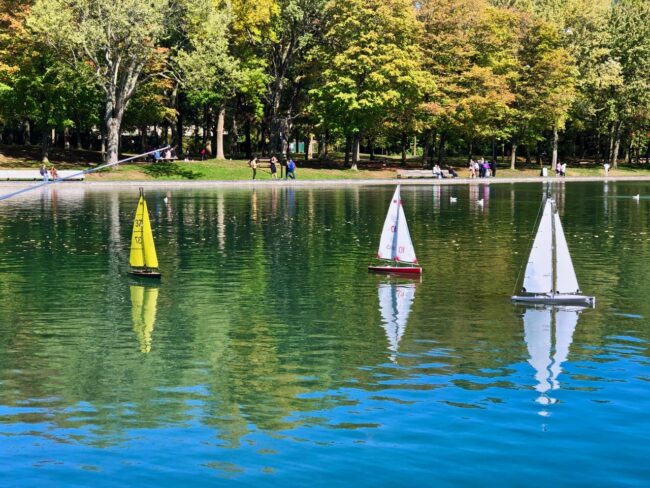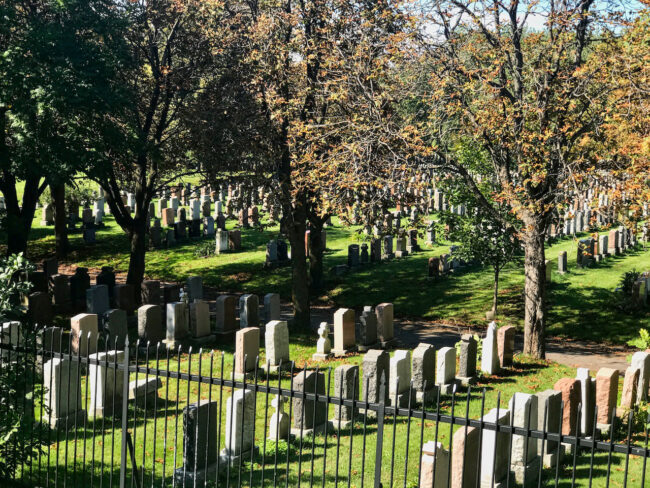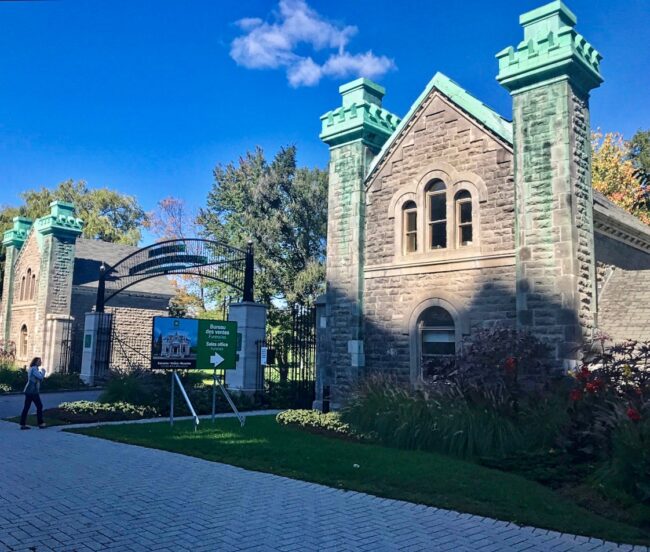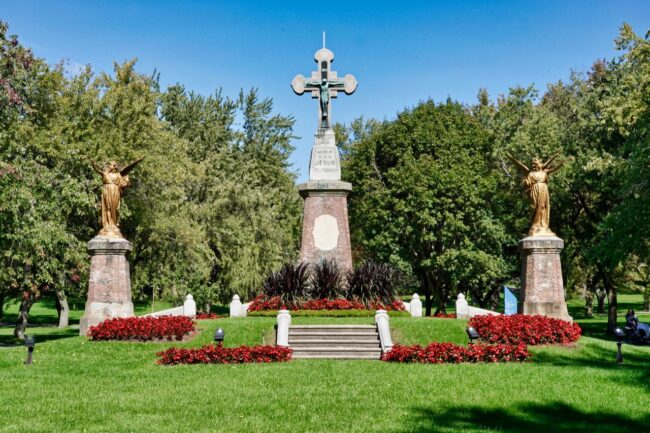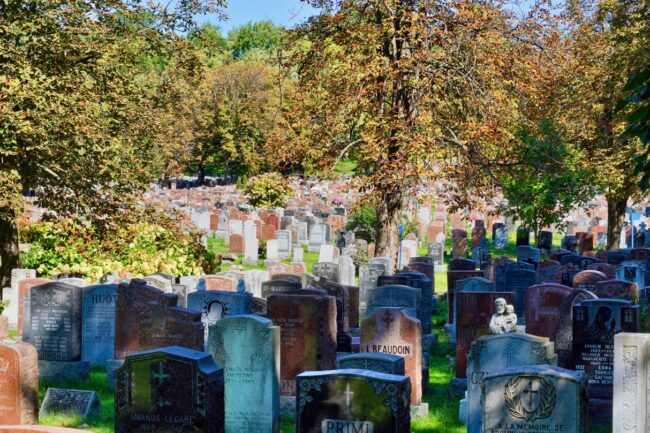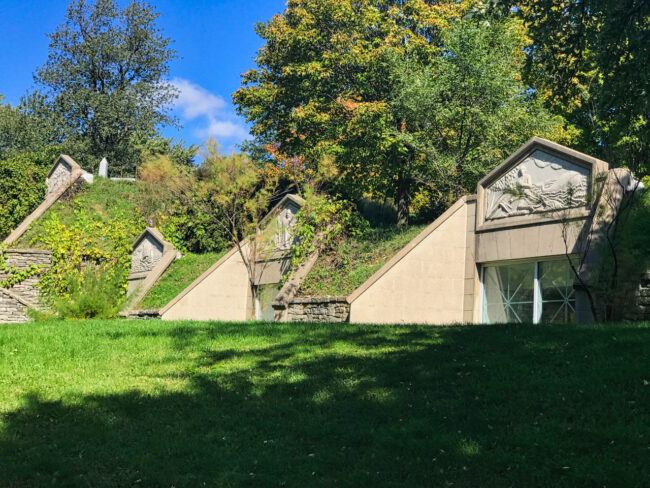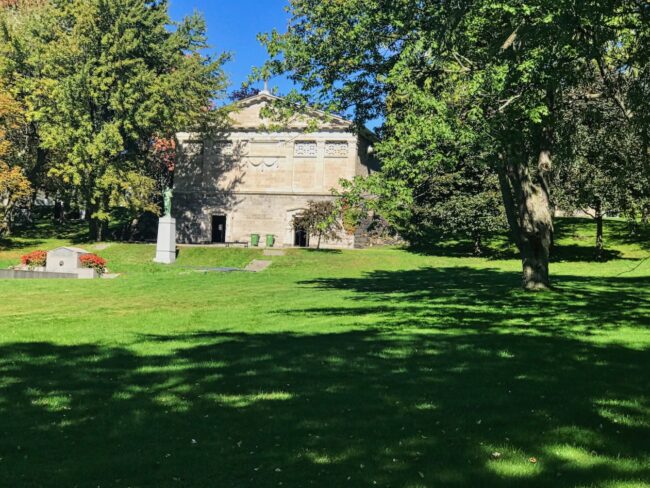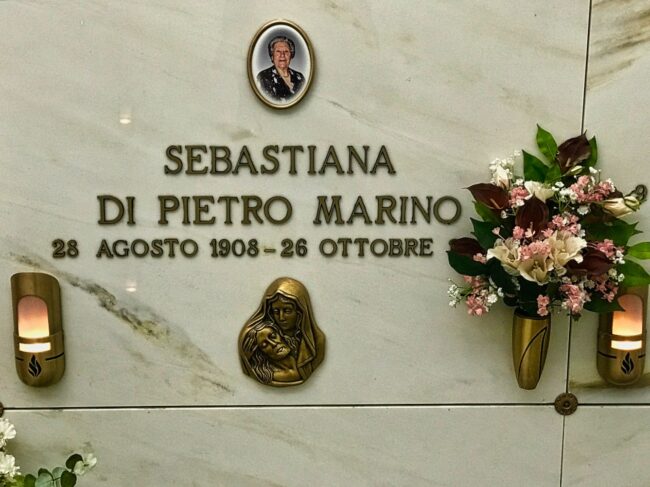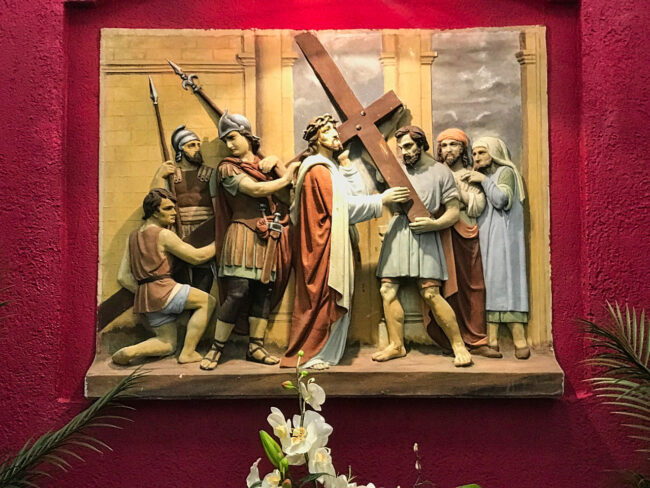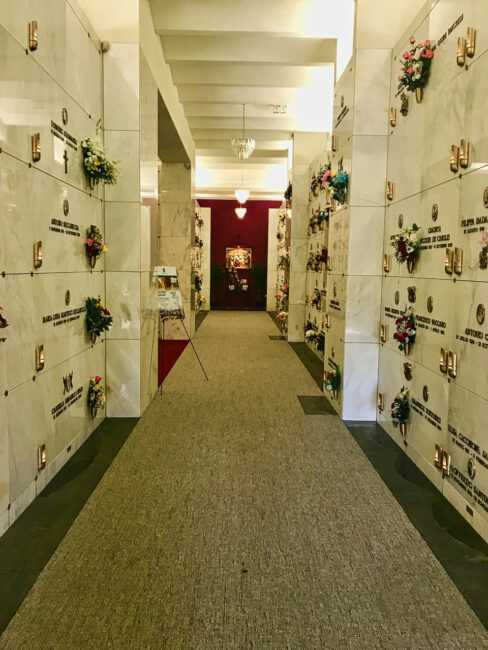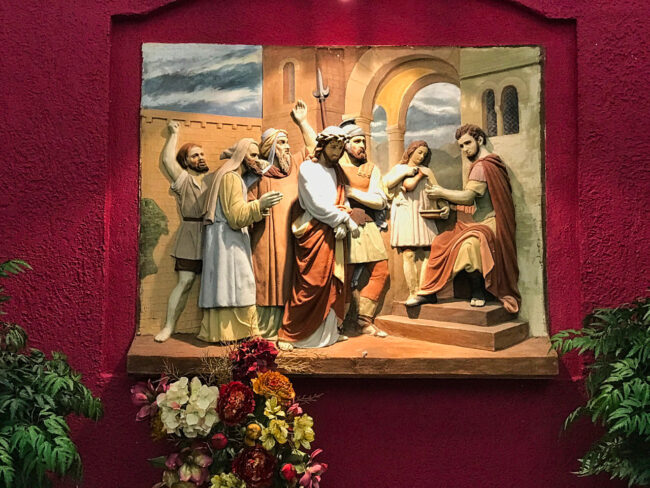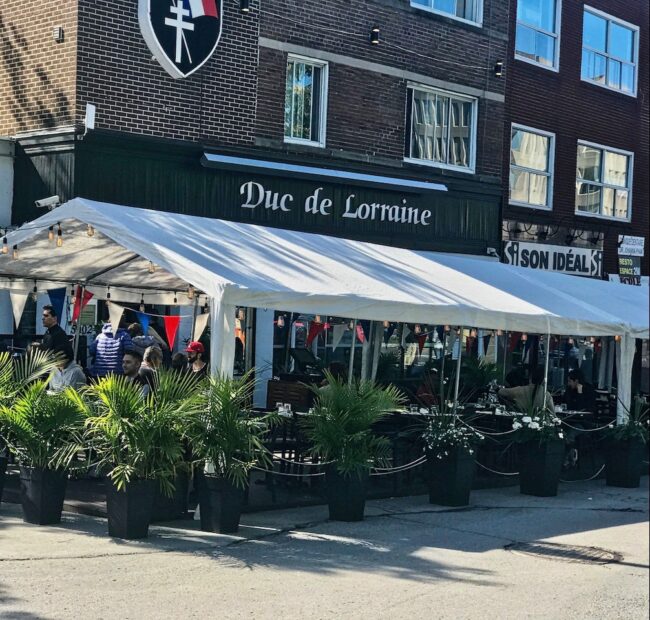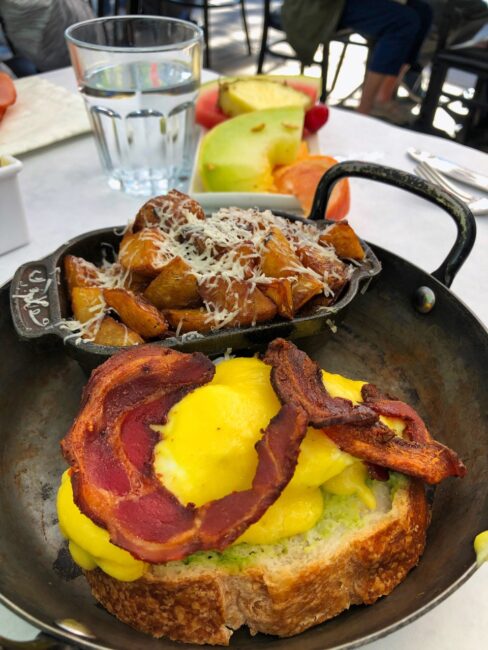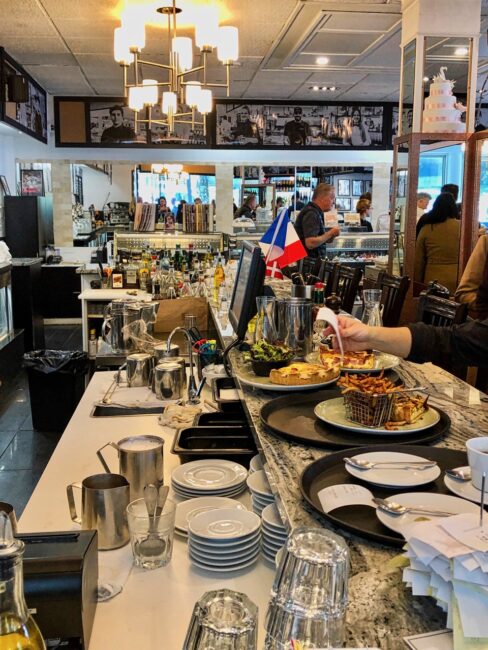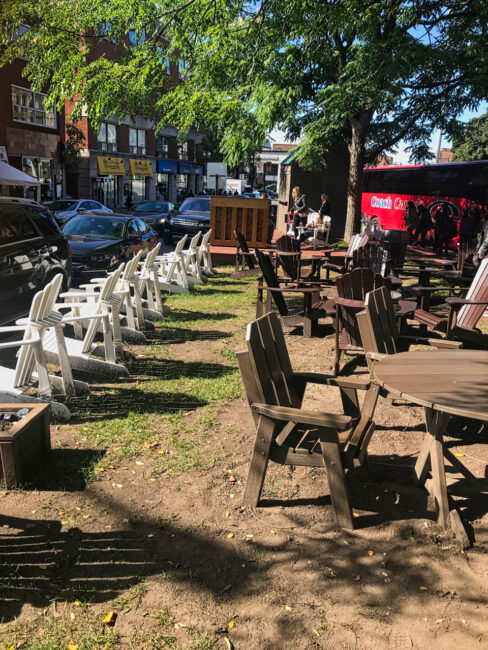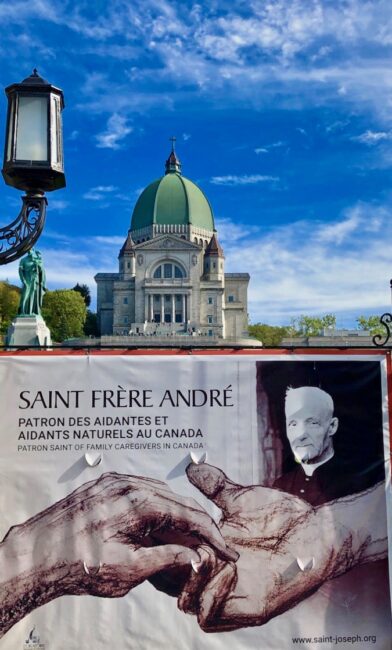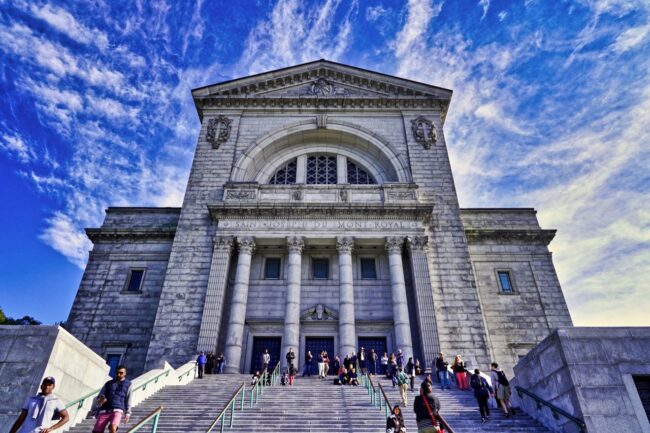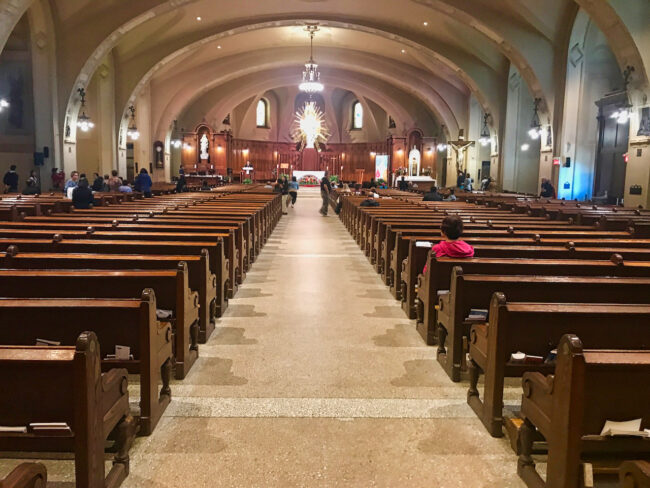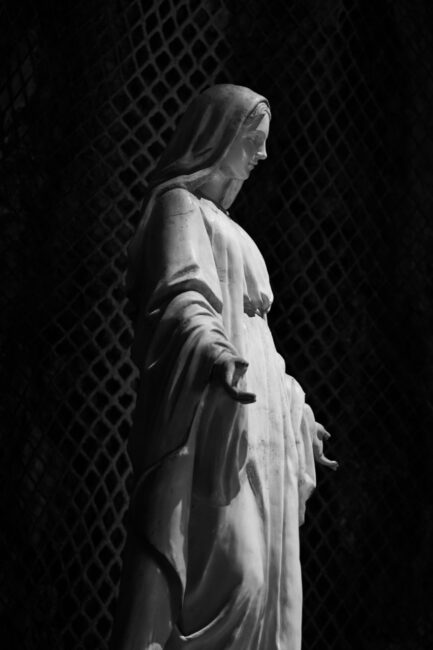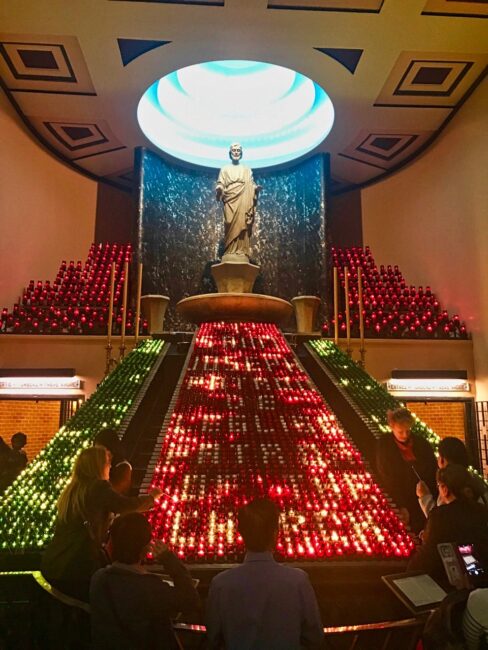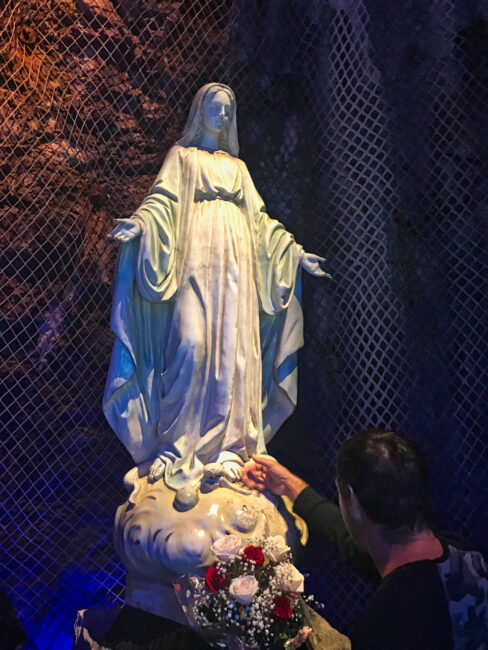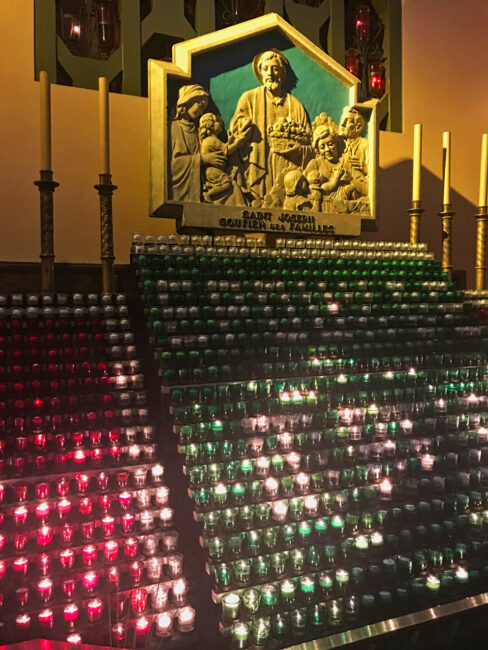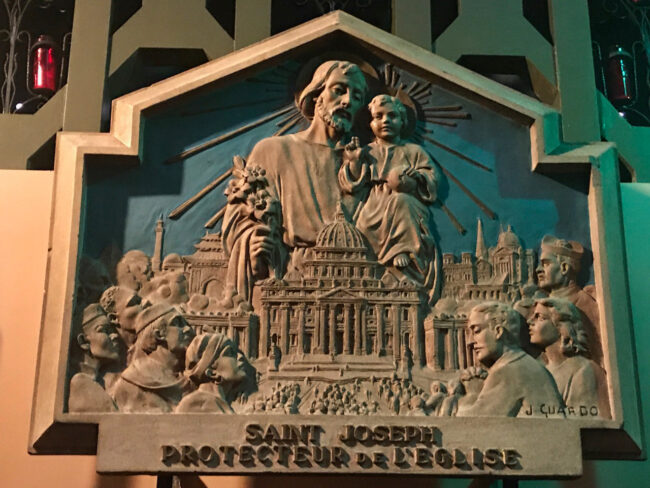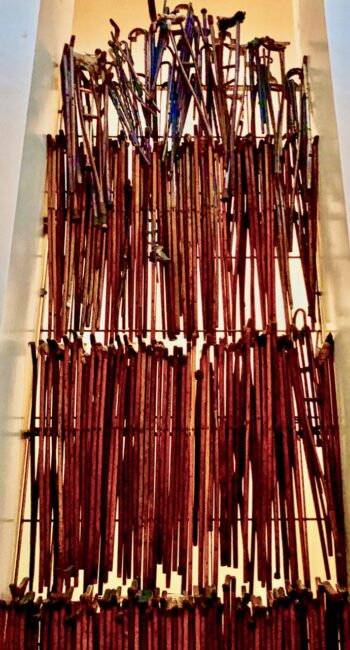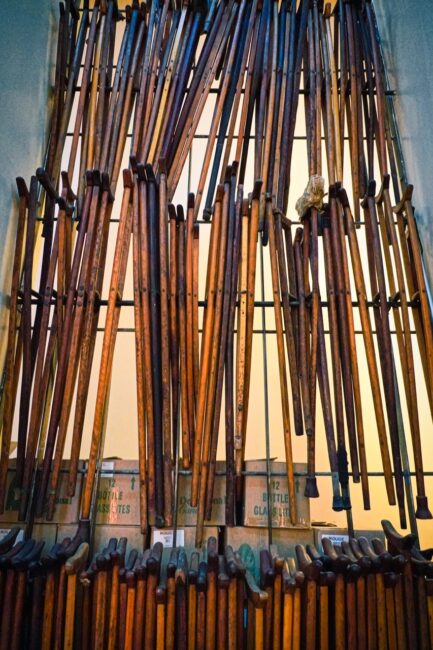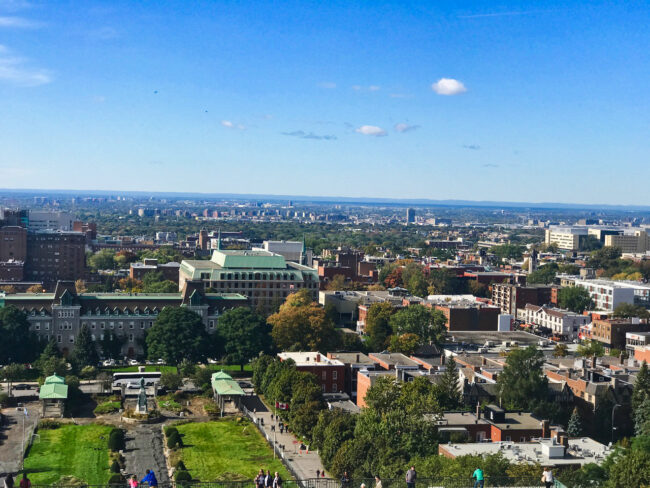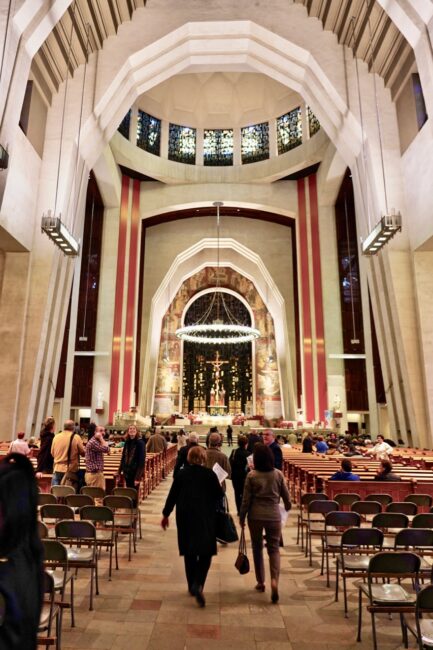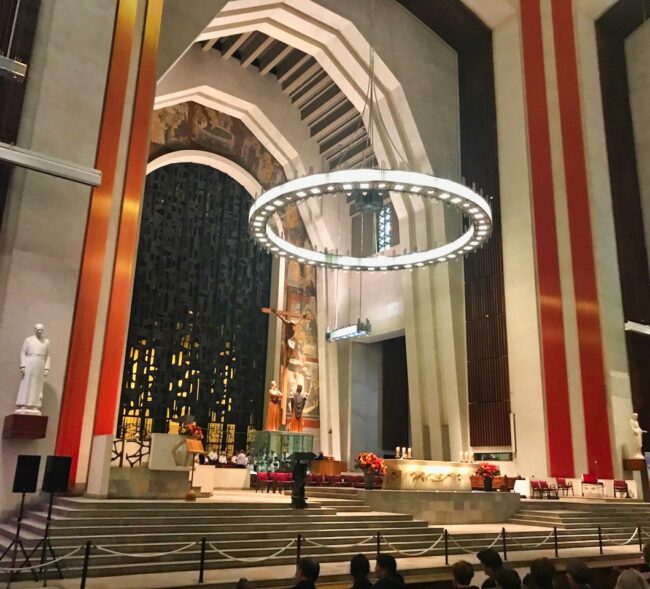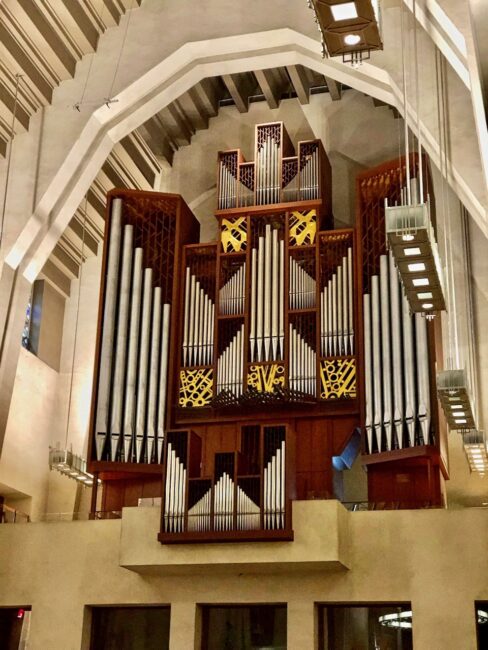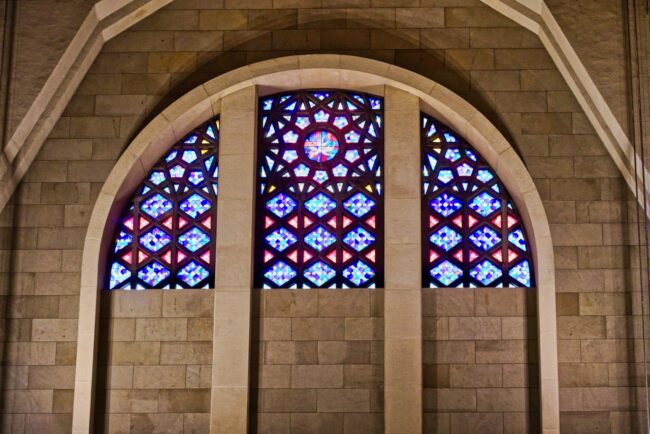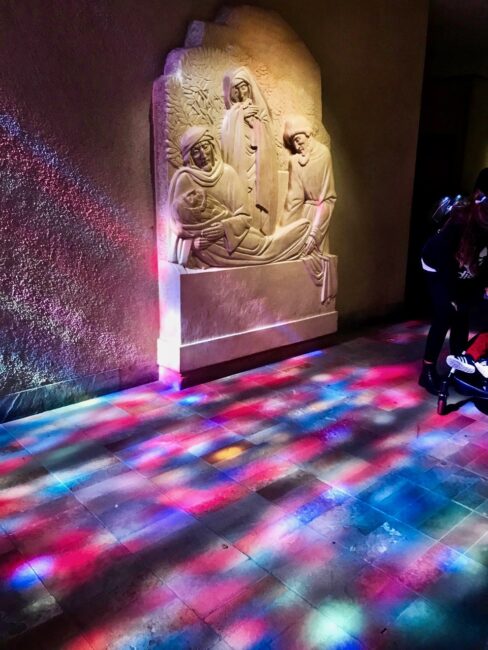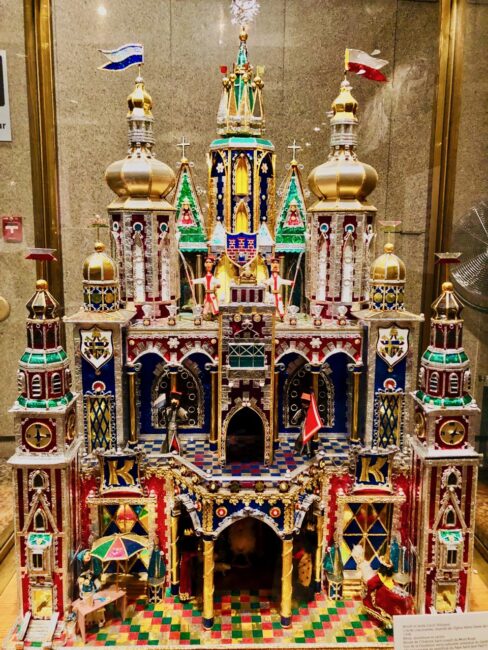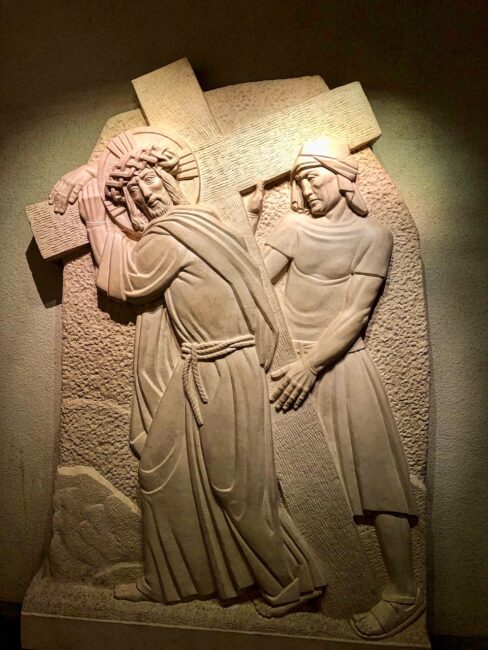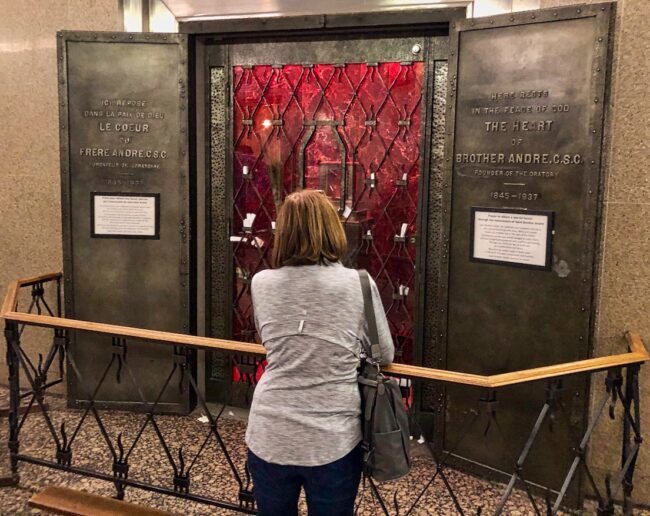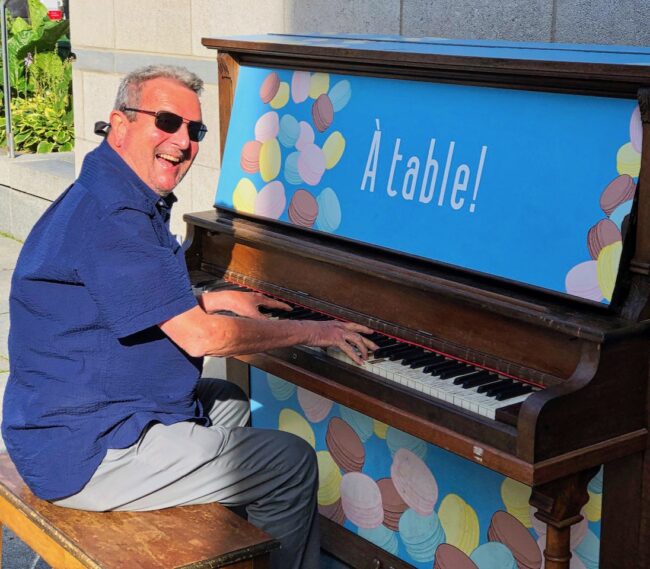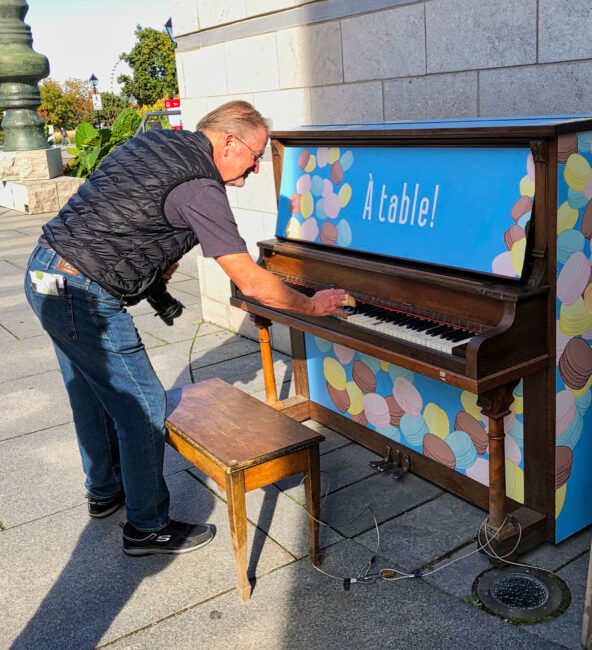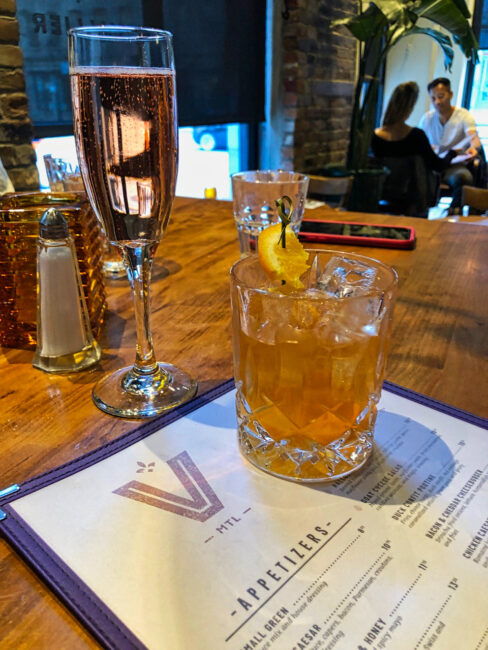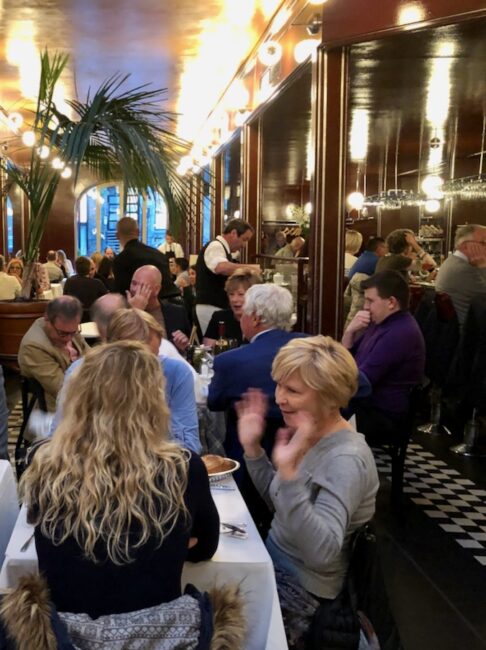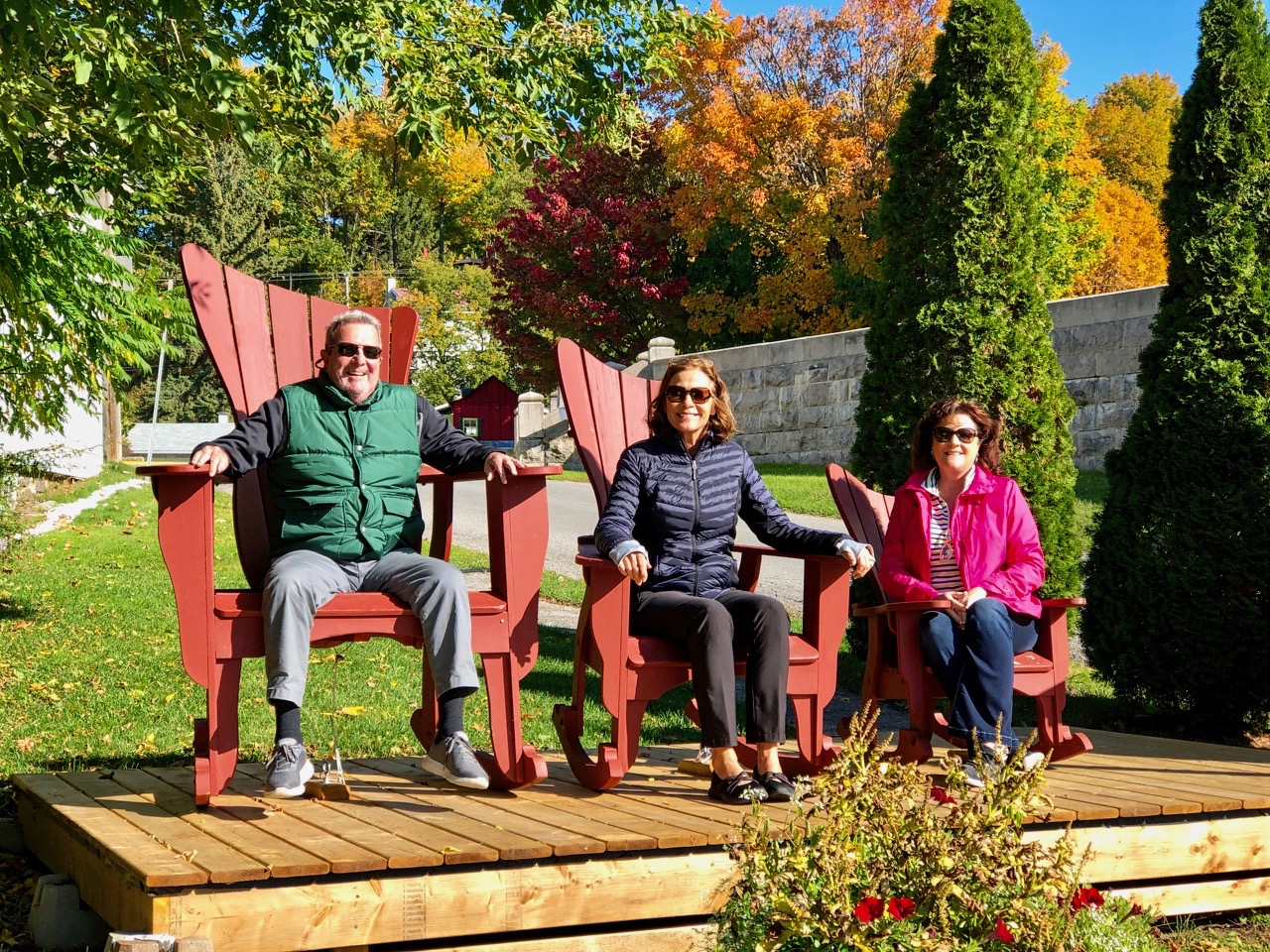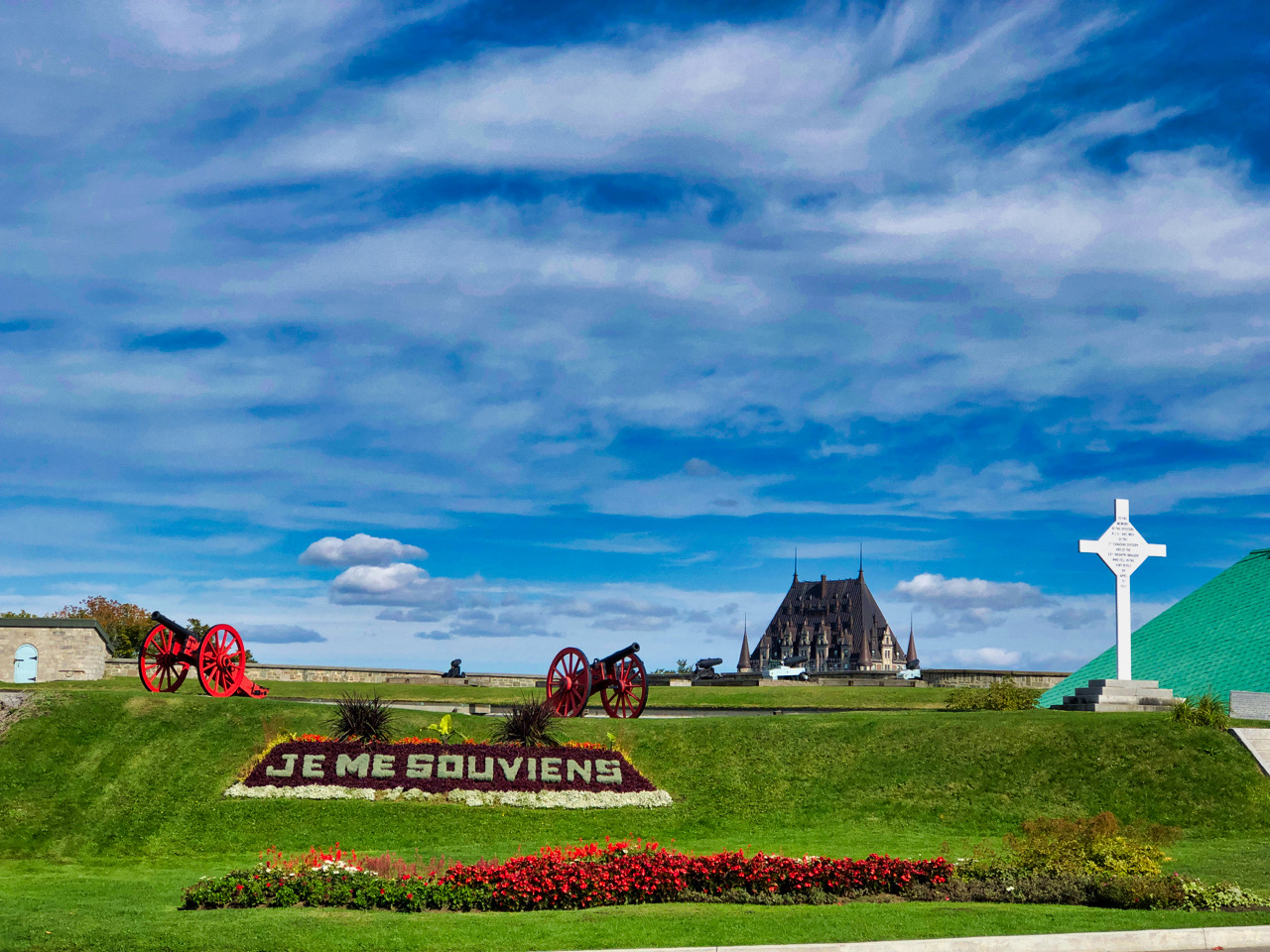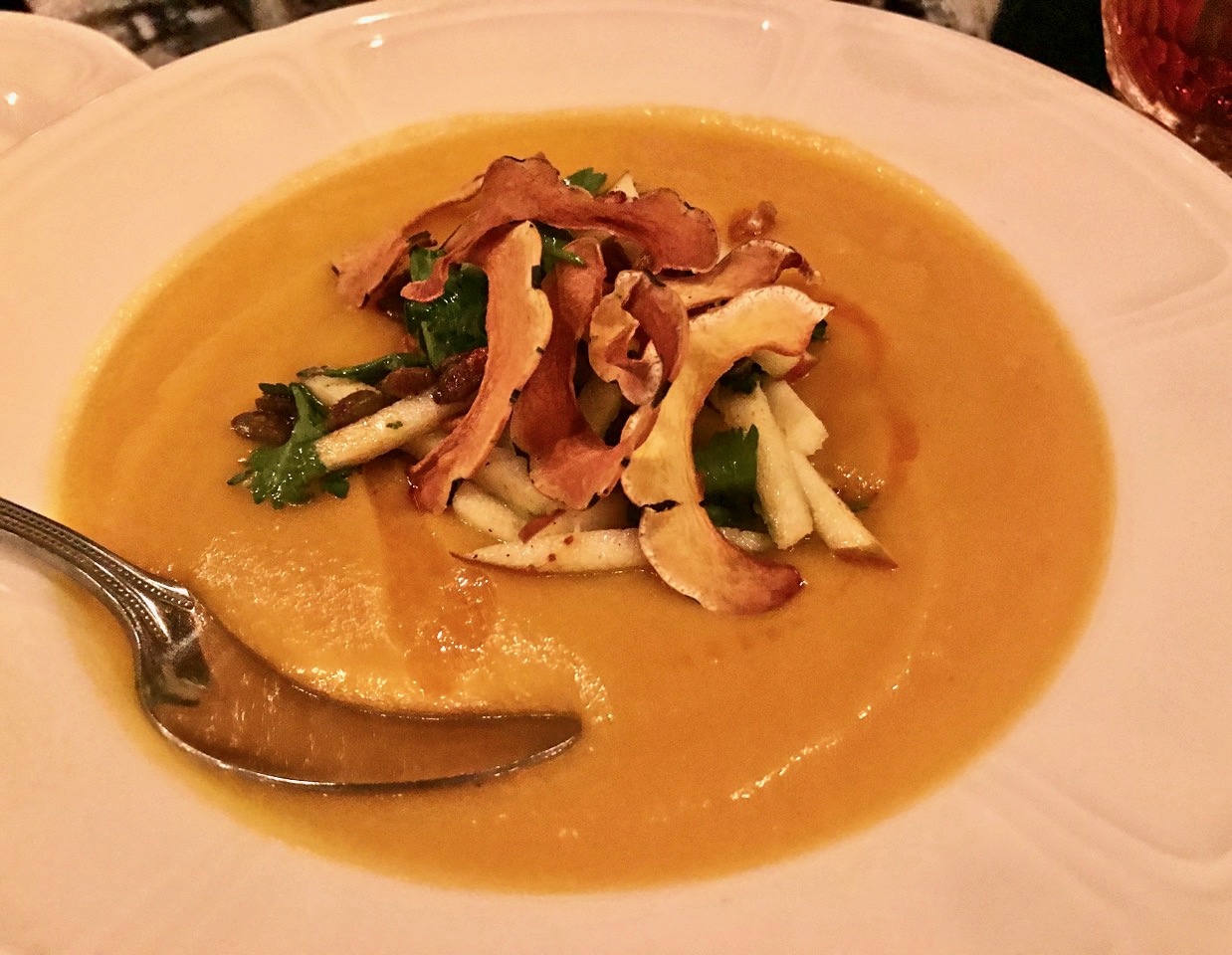
CHAPTER FOUR: DINNER BY THE PORT
November 6, 2019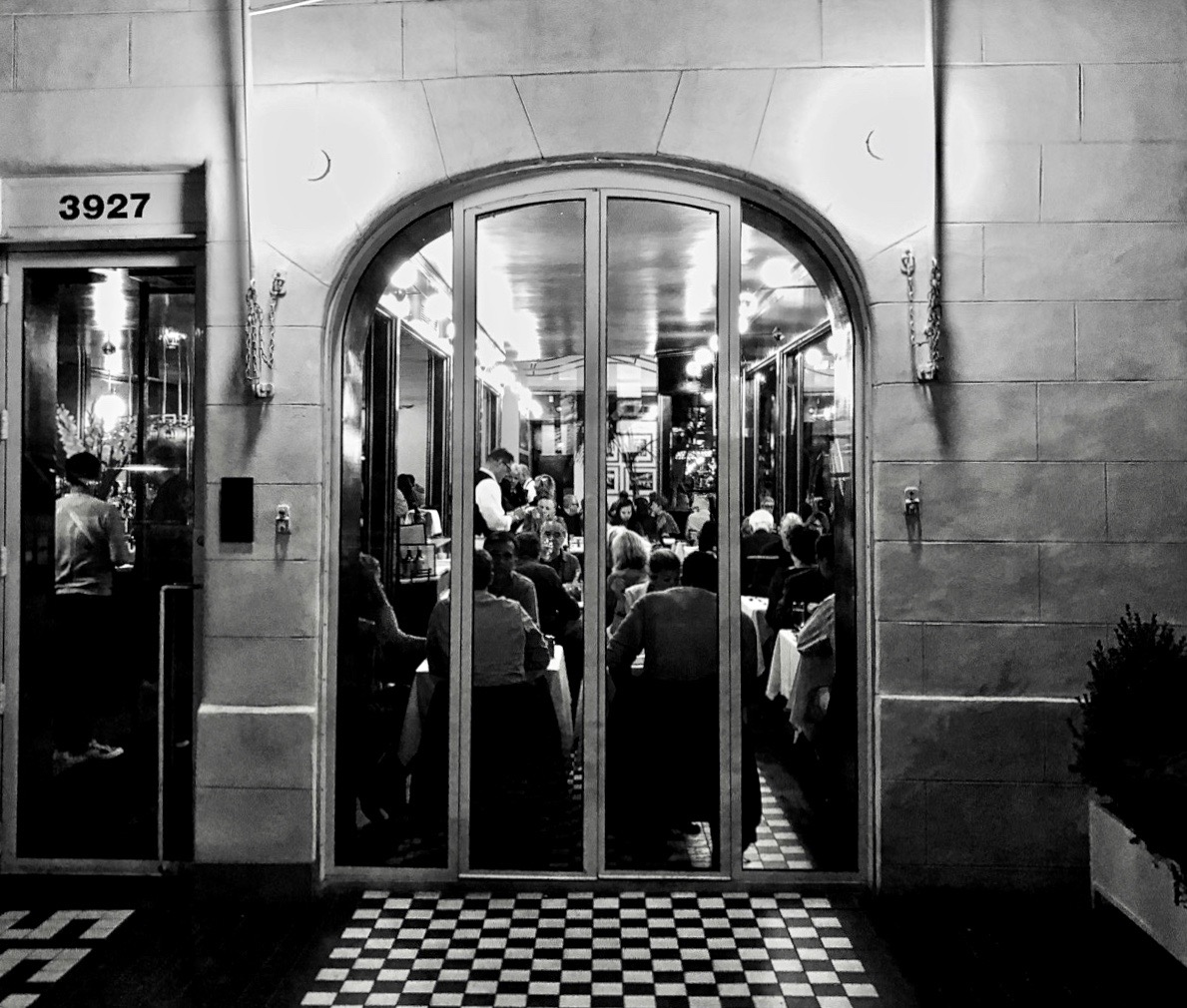
CHAPTER SIX: DINING OLD SCHOOL IN MONTRÉAL
January 9, 2020Colorful Québec: Mai Tai Tom’s 2019 Journey to Montréal & Québec City
CHAPTER FIVE: THE FOOLS ON THE ROYAL HILL
Day Four – Finding Dr. Kimble’s Wife’s Murderer, Park With A View, A Squirrelly Building, Central Park Designer, Boat Race, Where’s The Entrance?, A New Mrs. MaiTai?, Sing Us A Song You’re The Piano Man, Saint Be Praised, Up Up and Up, You’ve Gotta Have Heart, Cab Driver Comedian, The Line That Never Moved, Wise Decision, No Drinks Without Food, Drinks With No Food & Getting Ready For Old-School
Awakening to a majestic blue-sky morning, Tracy and I took our leisurely time getting ready for the day (I’m getting soft in my old age) while Kim and Mary attempted to have breakfast at Olive et Gourmando (turned out to be more sweets than actual breakfast). We also stopped in, but only to pick up some pastries and coffee that we ate back at the hotel.
On the way back to the hotel, Tracy exclaimed, “I think we found the one-armed man that killed Dr. Richard Kimble’s wife!” Meanwhile, I was singing “Me and My Shadow,” although I was perplexed as to where my arm had disappeared.
As we finished, Kim and Mary arrived back, and we decided it was time to head to the great outdoors (via a $14CAD Uber ride). Our destination: Parc Mont-Royal (Royal Mountain). As it turned out, our driver was from Boston, which could only mean one thing … we had to hear about the wonderful New England Patriots. Anthony actually wasn’t too obnoxious as he talked about “God” Tom Brady, and he was helpful in giving us the lay of the land as he let us out.
We would find out that the landscape architect who designed Central Park in NYC, was also responsible for Parc Mont-Royal (opened in 1876). We would be only four people of the five million visitors who come up here each year. The first European visitor here was Jacques Cartier, who with the help of some indigenous people, climbed it in 1535 (not such a tough climb … about 750 feet).
It was a short walk through a wooded forest before we came upon a viewpoint overlooking the Montréal skyline and landscape. We checked out the gorgeous views including those of Mont-Royal’s sister mountains … St-Bruno, St-Hilaire and St-Grégorie.
Behind us stood the Chalet du Pont-Royal, designed in French Beaux-Arts style in 1930 by architect, historian and archeologist Aristide Beaugrand-Champagne.
We got a kick out of Champagne’s vast interior design of the building, which includes a mural collection depicting Montréal’s colonial history.
Due to my affinity for members of the family Sciuridae, I was drawn to the 32 squirrels adorning the rafters. Just like the critters on our front lawn, each of these squirrels held a nut in their claws.
Retracing our footsteps we came upon Maison Smith (which would have looked like this had we taken this picture I’ve stolen from the internet). “Constructed in 1858, it (Maison Smith) was the destination of the first road laid out on the Mountain and is Montréal’s last surviving example of rural architecture of its time.”
Maison Smith houses a permanent exhibition talking about the park’s history (and its architect), along with all the flora and fauna.
One room displays events chronicling the park’s history on the wall, including the terrifying 1535 attack of Jacques Cartier by a pack of squirrels and an off-his-rocker raccoon as he ascended the top of the mountain. We surmised Cartier survived intact by passing out nuts.
Now it was time to take a stroll through a small portion of the 470-acre park. On a crisp, spectacular day, lots of families were out enjoying the sunshine.
Montréal seemingly has public art everywhere, and it was displayed in the numerous sculptures located in the aptly named “Sculpture Park.”According to “Montréal for 91 Days, ”the sloping field is studded with strange gray monuments. These are the remains of the International Sculpture Symposium, which in 1964 invited twelve artists from around the world. Over fifty years later, most of the works are still visible.”
We walked along the Chemin Olmsted, and in the near distance is Parc Mont-Royal’s only body of water, Lac aux Castors (Beaver Lake), “an artificial basin fitted in 1938 on a former swamp.”
An old beaver dam discovered during work on the lake is how the lake got its name. It was not named after the TV show.
While there, we witnessed a small version of the America’s Cup, as competitors vied to get their remote-controlled sailboats to maneuver the makeshift course in the fastest time.
Near the pavilion at the lake was a small garden that (not surprisingly) caught the eye of Tracy, where she and Mark Focus (aka Kim) took some flower photos.
As for me, I wanted to go visit some dead people.
Not too far away are two of Montréal’s famed cemeteries, Cimetière Mont-Royal and Cimetière de Notre-Dame-des-Nieges, which was the one higher on my list. We were told by someone at Maison Smith that the gate nearest to the lake might be closed, and she was right.
So we walked for quite a long time on the sidewalk adjacent to the cemetery. After turning the corner, we did find the main entrance open.
From all the walking we realized that this 343-acre cemetery is the largest cemetery in Canada. There are 34 miles of shaded pathways, but since it seemed like we had just walked 34 miles, most of the crew were happy to rest for a bit.
I trudged onward for about 10 minutes and found some nice condos for the deceased …
… and also stepped inside the Mausoleum Sainte Clare of Assisi …
… where niche “living” is provided.
I would have loved to wander the spacious grounds, but back-tracking (uphill) was not in the cards … but lunch certainly was, because we had to take a trek up another hill to our next destination.
A couple of blocks from the cemetery stood Duc de Lorraine, so we “Duc’d in.” Well, actually we sat out on the patio, since the inside was full.
Our server told us service might be a tad slow, because they had just received a large tour group. At the time it didn’t bother us, but as the day grew blustery (aka cold) we were hoping that our food would arrive quicker. When it did, it was surprisingly good. From the French onion soup to eggs Benedict to the mac & cheese with chicken plus the ham and cheese on a croissant, all the dishes satisfied.
We even checked out the quaint interior that contained lots of goodies.
While sitting and now kind of freezing at lunch, we heard the sound of piano music. Across the street was a tiny strip of land, and at one corner of it sat a piano being played by various people. As we would find out later, there are pianos scattered throughout Montréal allowing anyone who feels like tinkering with the keys to sit down and play it again, Sam.
Tracy accused me flirting with the server, which I think at my age is not called flirting. I denied the fact, but Tracy got photographic proof that she holds against me to this day. That said, our server from the south of France was quite intelligent.
Refreshed, it was back up a hill to a shrine that receives two million visitors a year, many of them so devout they’ll climb 99 steps to its front door on their knees. L’Oratoire St-Joseph is “the world’s largest and most popular shrine dedicated to the earthly father of Jesus (Canada’s patron saint).” It is the idea of Brother André Besette (1845–1937), who “began building a chapel on the mountainside across the road to honor his favorite saint.” André scattered St. Joseph medals around the area praying for an oratory to be built on this site.
André used to visit the sick in Montréal, supposedly healing them by rubbing oil on their wounds, and St. Joseph was his guy. Pilgrims came from all over to to be cured from sickness and injury. I gave it a shot, but still had to have a knee replacement a month later. Oh well. Looking upward, we saw its copper dome, one of the largest on the planet.
With my bad knees, along with not being Catholic, I walked up the 99 steps (probably slower than some people can do on their knees).
We meandered through a hallway to the Crypt Church, which was constructed in 1915. There’s a Carrera marble statue of St. Joseph behind the altar, but we did not venture up there as there was a service in process.
Adjacent to the Crypt Church is the Votive Chapel, holding more than 10,000 votive candles.
St. Joseph is honored here. Well, I guess he’s honored everywhere. All that was missing was some aspirin for children.
Ex-votos (lots of canes and crutches). “Grateful pilgrims” left them here during Brother André’s life.
Then it was up, up, up via escalators to the Basilica, where more canes and crutches could be seen. By now, I felt like borrowing one.
Before entering, we took a peek outside at the grand view.
Inside, we checked out the basilica that seats a modest 2,028 people.
The tracker grand organ comes from Germany, and there are ten stained-glass windows.
We walked and explored for a bit …
… before heading back down. On a lower level we stopped to view the heart of Saint Brother André. Talk about someone who stole your heart? On March 16, 1973, someone literally stole André’s heart from the Oratory. More than 600 days later, due to a tip, it was found in the basement of a house in southwest Montréal and returned.
If we scurried from here, we could still make our last appointed destination, the Pointe-à-Callière Archeology and History Museum, which had been highly recommended. Our Uber driver (Ali from Algeria) was a hoot. I think you’ll be seeing him in the Catskills any month now.
He dropped us off near the museum, and standing in front of us was another piano. After emulating Billy Joel and Elton John, Kim and I took our tips from the people … they told us to keep our day jobs (we didn’t have the heart to tell them we’re retired).
Inside the museum was a line of about 25 people deep with one person manning (well, it was a woman) the counter. We decided it should be a short wait. Twenty minutes later, the line was still about 25 people deep. Montréal, we have a problem It was 4:20, and it was time for an executive decision. “Let’s find a happy hour” was the collective decision.
We stopped by the Pub St. Pierre, only to be told they only serve drinks with food. Not hungry, and not too long before dinner, we decided to move on.
Vallier (425 McGill Street) was happy to serve us our cocktails …
… and afterward we walked the short distance back to our hotel for a five-minute nap before freshening up for the evening.
This was the dinner I had most looked forward to before leaving. It’s a tough place to get reservations, but through online perseverance I got them two weeks before we left. It was time to head to the Plateau …
CHAPTER SIX: DINING OLD SCHOOL
Night Four – L’Express

